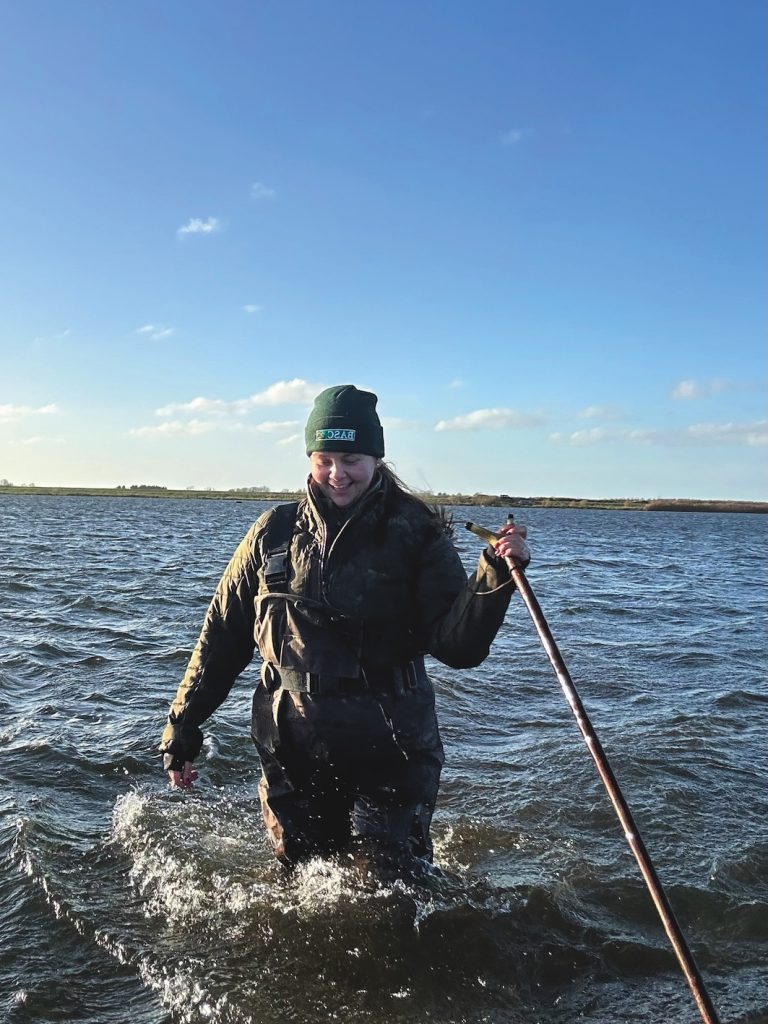Win CENS ProFlex DX5 earplugs worth £1,149 – enter here
How can you pick the right cover crop for your shoot?
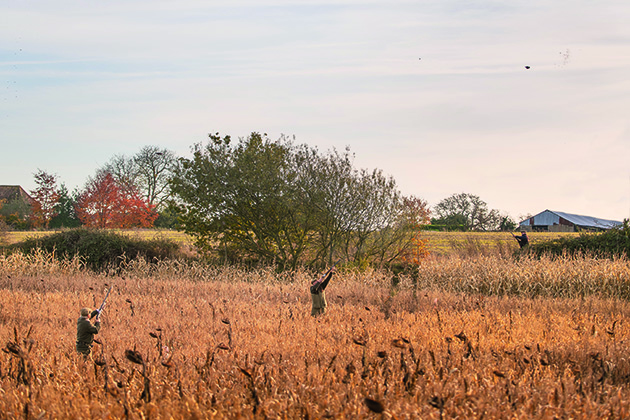 Fine aim from Ray and Horace at the fourth drive as the birds flush over the wild bird seed mix
Usd 11 dec 19 shoot report
Fine aim from Ray and Horace at the fourth drive as the birds flush over the wild bird seed mix
Usd 11 dec 19 shoot report
What are cover crops?
By definition, a game cover is any crop grown with the intention of feeding and/or holding gamebirds in the shooting season.
It was at a very young age that I began to appreciate the benefits that a good game cover crops can bring to a shoot. Aged seven or eight, I would go out beating for the little farmers’ syndicate that my grandad was part of. On these days, we would always most look forward to ‘Rodger’s Maize’, so called because it was a sizeable block of maize on Rodger’s farm (could you have guessed?). I can, to this day, recall the clouds of pheasants that would flush from the cover crop, towering over the head of me as a young boy.
I can also remember the kale-based game covers across the shoot, mainly because of the inevitable soaking one received when beating through them. Needless to say, as an eight-year-old, this was the highlight of my day.
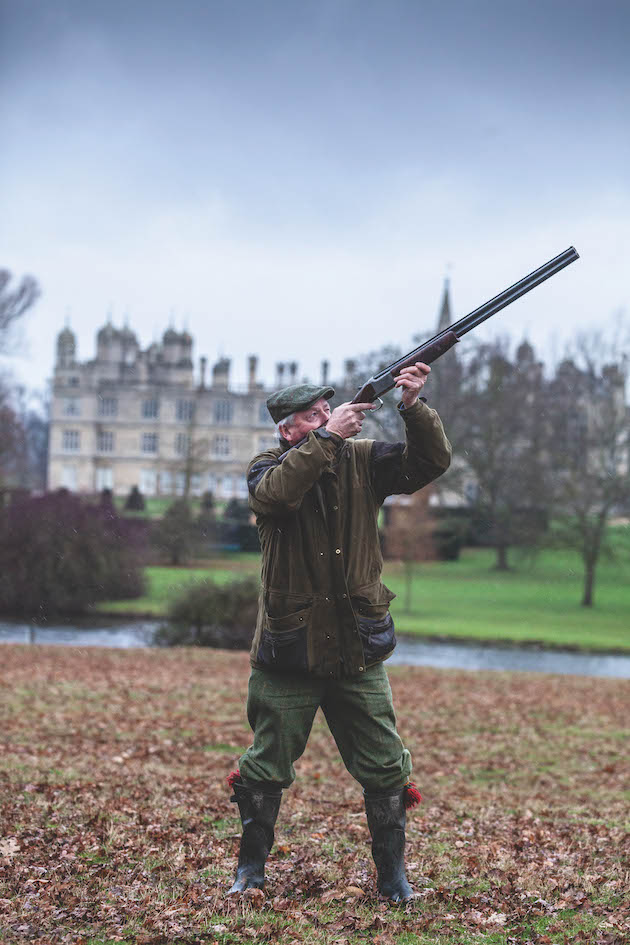
There are very few shoots that are able to function without using cover crops
Tailored approach
Fast forward a few years and I run a small shoot on our family farm with my brothers, as well as overseeing the shoot on the large estate that I work for. For both very different shoots, cover crops play a vital role in the overall success of a season and it is embarrassingly obvious when the cover on a drive has not grown as planned.
This is typical of shoots up and down the country. Only a handful of the very oldest sporting estates, with their landscape and woodlands designed, planted and managed specifically for pheasant shooting, can run their shoots with no cover crops at all.
But when it comes to game covers, the options really are endless and working out the most appropriate approach for your shoot and your ground conditions can be a minefield. Each and every shoot has different topography and soil types, as well as different objectives.
The more commercial shoots, aiming to hold big numbers of birds, will have a different approach to that adopted by the smaller, more conservation-orientated shoots or those based around stewardship schemes, looking to provide wider environmental benefits.
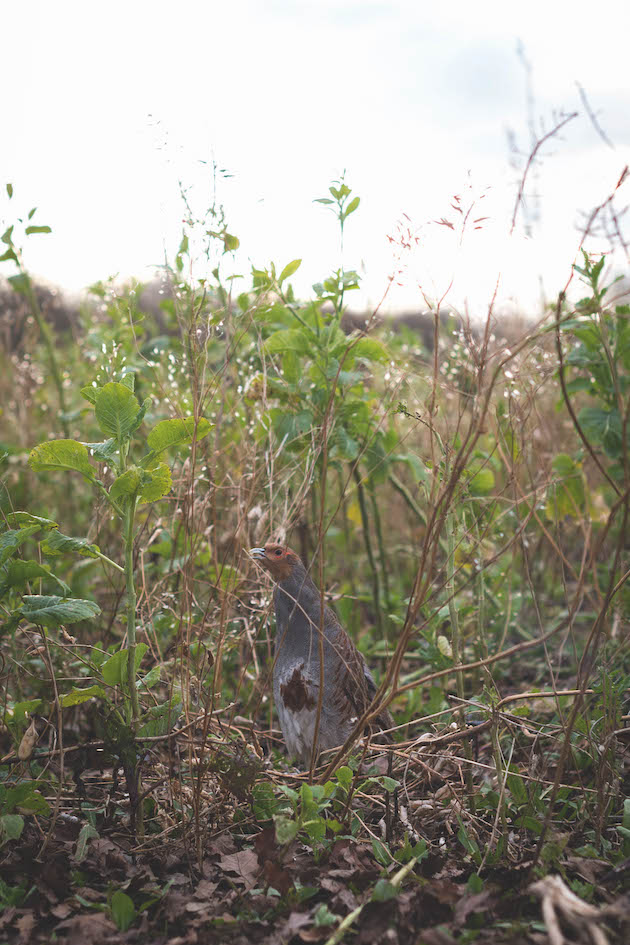
One of the fundamental purposes of cover crops is to provide the gamebirds with some form of protection from above
There are a few essential characteristics that all game covers should have to some extent or another. Fundamentally, gamebirds need to feel safe and protected when they are in the covers, so some element of cover from an overhead canopy is vital. If they are unable to hide and shelter, they are unlikely to want to spend time in the covers. So, when it comes to trying to flush them, they simply aren’t going to be there.
Secondly, covers should provide some feed element for the birds. There has to be a calorie-based incentive for the birds to want to go into them. It’s like going to a pub and finding they don’t have any beer. You’d simply go elsewhere.
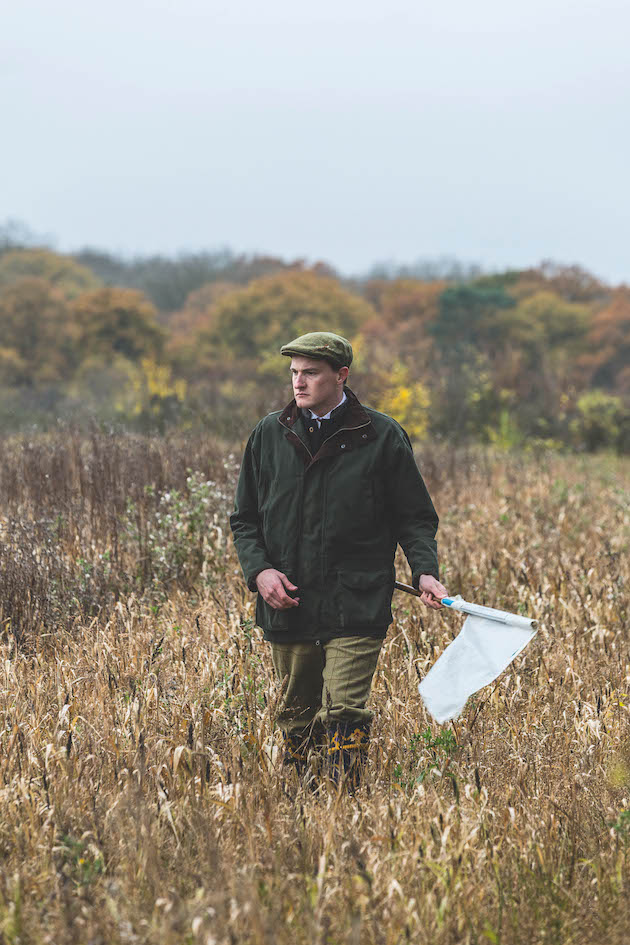
Jamie Tusting knows the importance of good cover crops to a successful shoot
Balancing act
While it is important that game covers give warmth in the colder months, there is a fine balance to be struck and it is critical that covers are accessible for birds. There is often a tendency to aim for as thick a game cover as possible, but if the birds cannot move about easily, they will be less inclined to venture in.
For most commercial shoots, the key is to ensure consistency and reliability. If a cover crop fails to grow, that can knock out a drive for a season. When the margins are as tight as they are in game shooting, this is a luxury few can afford. To give themselves the best opportunity, many shoots rely heavily on their maize covers.
As I learned at a very young age, it is for good reason that maize is one of the most popular crops. Its consistency and excellent ability to hold game is second to none.
Planted in May, or when the ground is warm enough to sit on without getting a cold backside, it is usually well established by the time the poults start venturing out of pens later in the summer. Maize is also good for the control of broadleaf weeds (because you can spray with a wider range of pesticides), so adding it into a rotation can be a useful tool if weed burden is becoming an issue.
There are, of course, some downsides to maize, notably the attraction of rats and badgers. It is also not covered under any stewardship schemes and the food offering for smaller farmland birds is limited.
Perhaps second in line to the game cover throne is kale. Its main downside is the difficulty many can have in getting it well established. This has been even more noticeable in the past couple of years with the banning of neonicotinoid pesticides and the meteoric rise in the flea beetle. But, if you can get it established, kale provides a warm cover, producing plenty of small seeds that are beneficial to many bird species. Kale can be left for a second year, so can be an economical option, once established.
The estate I work for is heavily geared towards maize and it grows well in the light soils we have. We have experimented with some of the other covers available, but maize is far and away the most successful and certainly provides the most reliable shooting for our guests.
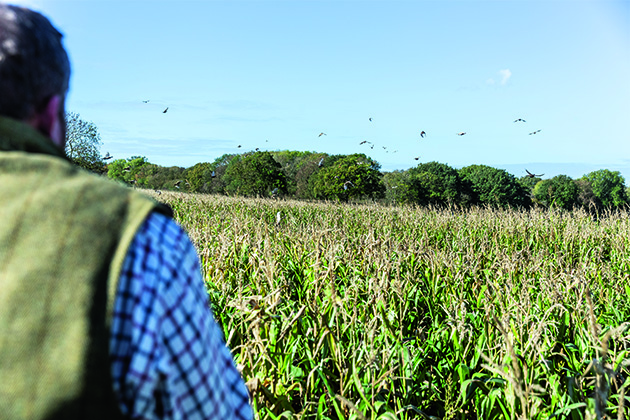
Maize is one of the most popular cover crops as it is consistent and holds game very well
Multiple benefits
The ‘straight’ options go on and on, from triticale and buckwheat to quinoa and sunflowers. But, for many shoots, the objectives are numerous, with conservation and stewardship compliance key drivers alongside the desire to hold and flush game.
Many shoots want to ensure they draw multiple benefits from their cover crops and, often, the options available from Countryside Stewardship schemes offer some good opportunities.
For the past few years on our family shoot, the covers have all been part of a Higher Level Stewardship scheme and we have used a general-purpose game mix from Cotswold Seeds containing a huge range of plants, including buckwheat, millet, sunflowers, fodder radish, rape and quinoa.
In truth, this hasn’t always been overly successful. Our heavy ground and high weed burden has left covers looking a bit thin in recent years. We’ve often had to fall back on a late-summer sowing of mustard to provide cover, but the mustard is often shorter-lived and only a last resort.
However, when they’ve been well established, the benefits are visible in our pheasant returns and evidenced by the clouds of farmland birds that come pouring off the covers as beaters go through.
I’m always keen to question keepers and farmers on their cover crop selections and the variation is continually surprising.
So, with all of the different options available, how do you decide what is best for you? There are a number of factors that should be taken into consideration. Soil type and topography are the obvious influences, but shoots should also consider accessibility (can you reach the plot with a cultivator, drill and sprayer), shading, weed burden and pests. Grazing pressure from rabbits and deer can be devastating on newly established crops.
Seeking advice
If all of this is alien or you are simply not sure, it is best to take some professional advice. Seed companies such as Bright Seeds specialise in the assessment of land for cover crops and will advise and build bespoke mixes to suit. They will look at soil types, topography and objectives, among other factors, and help to design a game mix that suits your needs.
I’ve always found game covers to be one of the trickier areas of shoot management. There is such a wide variety of factors to take into account.
I am by no means even close to being an expert and have found the knowledge and guidance of professionals to be vital in ensuring success. Get game covers right and they can transform a shoot. Get them wrong and it can spell disaster for a season. The silver lining: if you get it wrong, you can have another go next year.
Related Articles
Get the latest news delivered direct to your door
Subscribe to Shooting Times & Country
Discover the ultimate companion for field sports enthusiasts with Shooting Times & Country Magazine, the UK’s leading weekly publication that has been at the forefront of shooting culture since 1882. Subscribers gain access to expert tips, comprehensive gear reviews, seasonal advice and a vibrant community of like-minded shooters.
Save on shop price when you subscribe with weekly issues featuring in-depth articles on gundog training, exclusive member offers and access to the digital back issue library. A Shooting Times & Country subscription is more than a magazine, don’t just read about the countryside; immerse yourself in its most authoritative and engaging publication.






